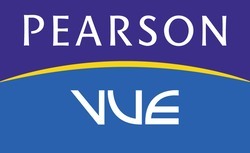You must be logged in to use this form
Course Overview:
Install, configure, and manage Red Hat JBoss Enterprise Application Platform
Red Hat JBoss® Application Administration I teaches you the best practices for installing and configuring Red Hat JBoss Enterprise Application Platform 6. Through hands-on labs, learn the essential, real-world tasks that a system administrator needs to know to effectively deploy and manage applications on JBoss Enterprise Application Platform.
Attendees to RH-345: Red Hat JBoss Application Administration I, will receive TechNow approved course materials and expert instruction.
Dates/Locations:
Duration: 5 Days
Course Objectives:
- Overview of JBoss Enterprise Application Platform
- Configure JBoss Enterprise Application Platform in standalone mode
- Configure JBoss Enterprise Application Platform in domain mode
- Configure servers
- Use the CLI tool
- The datasource subsystem
- The logging subsystem
- The messaging subsystem
- The security subsystem
- JVM configuration
- Migrating applications to JBoss Enterprise Application Platform 6
- The web subsystem
Prerequisites:
- Linux System Administration
Comments
Latest comments from students
Liked the class? Then let everyone know!
Here are all of our Microsoft Server Products related courses:
- TN-963: Windows Security Automation with PowerShell
- TN-5425: Networking with Windows Server 2016
- TN-5415: Installation, Storage, and Compute with Windows Server 2016
- TN-5202: Microsoft SharePoint 2010 and 2013: Workflows and Designing InfoPath Forms
- TN-5125: Configuring and Troubleshooting Windows Server 2008 Active Directory Domain Services
- TN-323: SharePoint 2010 and 2013 for Project Management
- MS-6232: Implementing a Microsoft SQL Server Database
- MS-6231: Maintaining a Microsoft SQL Server Database
- MS-10231: Designing a Microsoft SharePoint 2010 and 2013 Infrastructure
- MS-10175: Developing & Customizing Applications for Microsoft SharePoint 2010 & 2013
- MS-10174: Configuring and Administering SharePoint 2010 and 2013
TechNow is a mobile Pearson VUE Authorized Testing Center, and we can provide the testing right after your certification prep class; thus ensuring a higher pass rate on the certification exams.
Technow is also a mobile Prometric Testing Center.
We can deliver the on-site training and test all in the same week.
For more information, call us today at 800-324-2294

Course Overview:
Getting started with the Elastic Stack (ELK), optimizing search performance and building efficient clusters. Ingest and process data, writing complex search requests and response utilization, scaling of clusters up or down, managing indices in large clusters and multiple clusters, management of clusters and troubleshooting recommendations.
Attendees to TN-430: Elasticsearch Engineer (ELK) will receive TechNow approved course materials, expert instruction, and prepare you to take ELK exam.
Dates/Locations:
No Events
Duration: 5 Days
Course Outline:
Data Management
- Define an index that satisfies a given set of requirements
- Define and use an index template for a given pattern that satisfies a given set of requirements
- Define and use a dynamic template that satisfies a given set of requirements
- Define an Index Lifecycle Management policy for a time-series index
- Define an index template that creates a new data stream
Searching Data
-
Write and execute a search query for terms and/or phrases in one or more fields of an index
-
Write and execute a search query that is a Boolean combination of multiple queries and filters
-
Write an asynchronous search
-
Write and execute metric and bucket aggregations
-
Write and execute aggregations that contain sub-aggregations
-
Write and execute a query that searches across multiple clusters
-
Write and execute a search that utilizes a runtime field
Developing Search Applications
-
Highlight the search terms in the response of a query
-
Sort the results of a query by a given set of requirements
-
Implement pagination of the results of a search query
-
Define and use index aliases
-
Define and use a search template
Data Processing
-
Define a mapping that satisfies a given set of requirements
-
Define and use a custom analyzer that satisfies a given set of requirements
-
Define and use multi-fields with different data types and/or analyzers
-
Use the Reindex API and Update By Query API to reindex and/or update documents
-
Define and use an ingest pipeline that satisfies a given set of requirements, including the use of Painless to modify documents
-
Define runtime fields to retrieve custom values using Painless scripting
Cluster Management
-
Diagnose shard issues and repair a cluster’s health
-
Backup and restore a cluster and/or specific indices
-
Configure a snapshot to be searchable
-
Configure a cluster for cross-cluster search
-
Implement cross-cluster replication
Comments
Latest comments from students